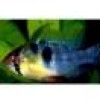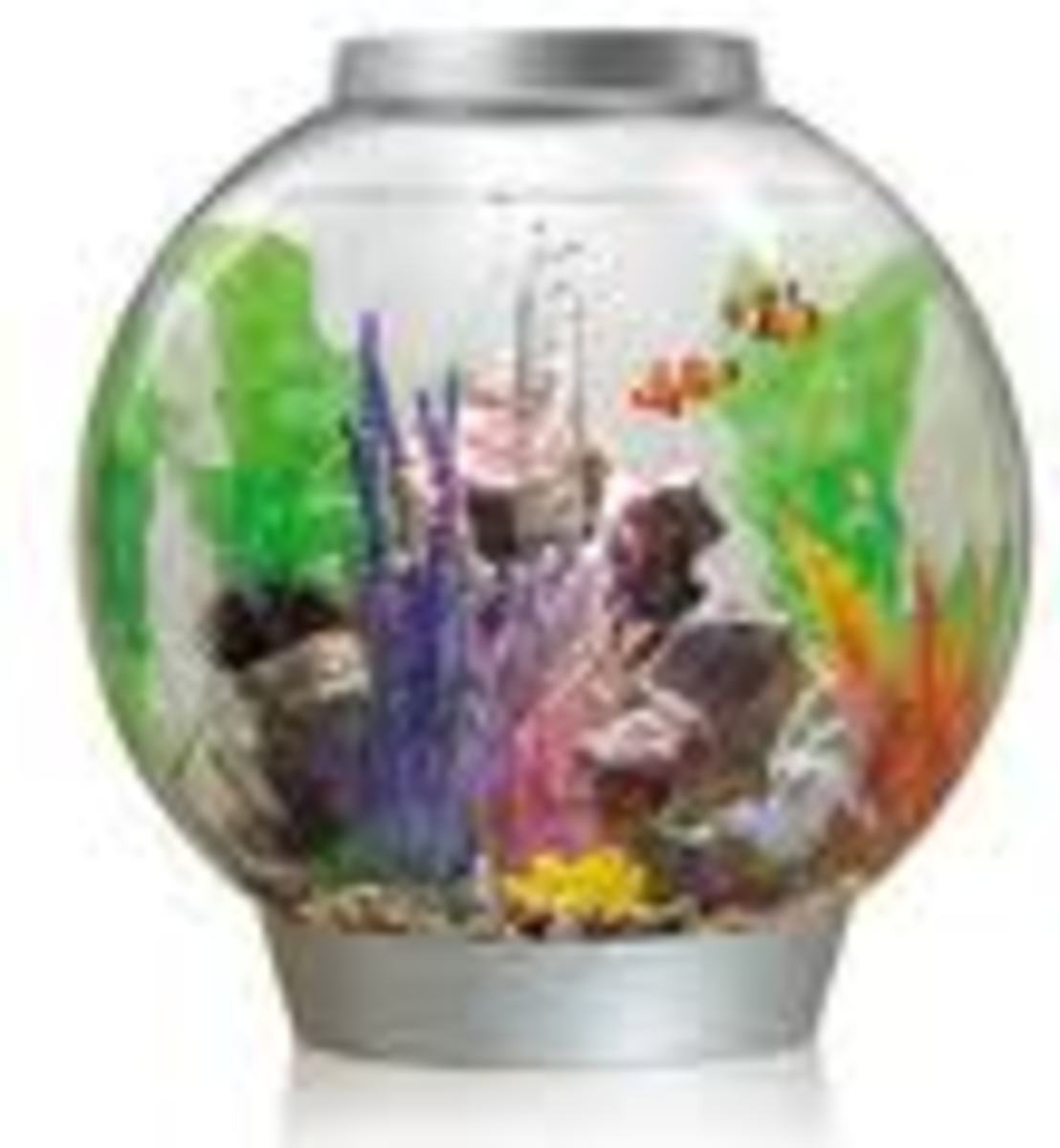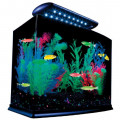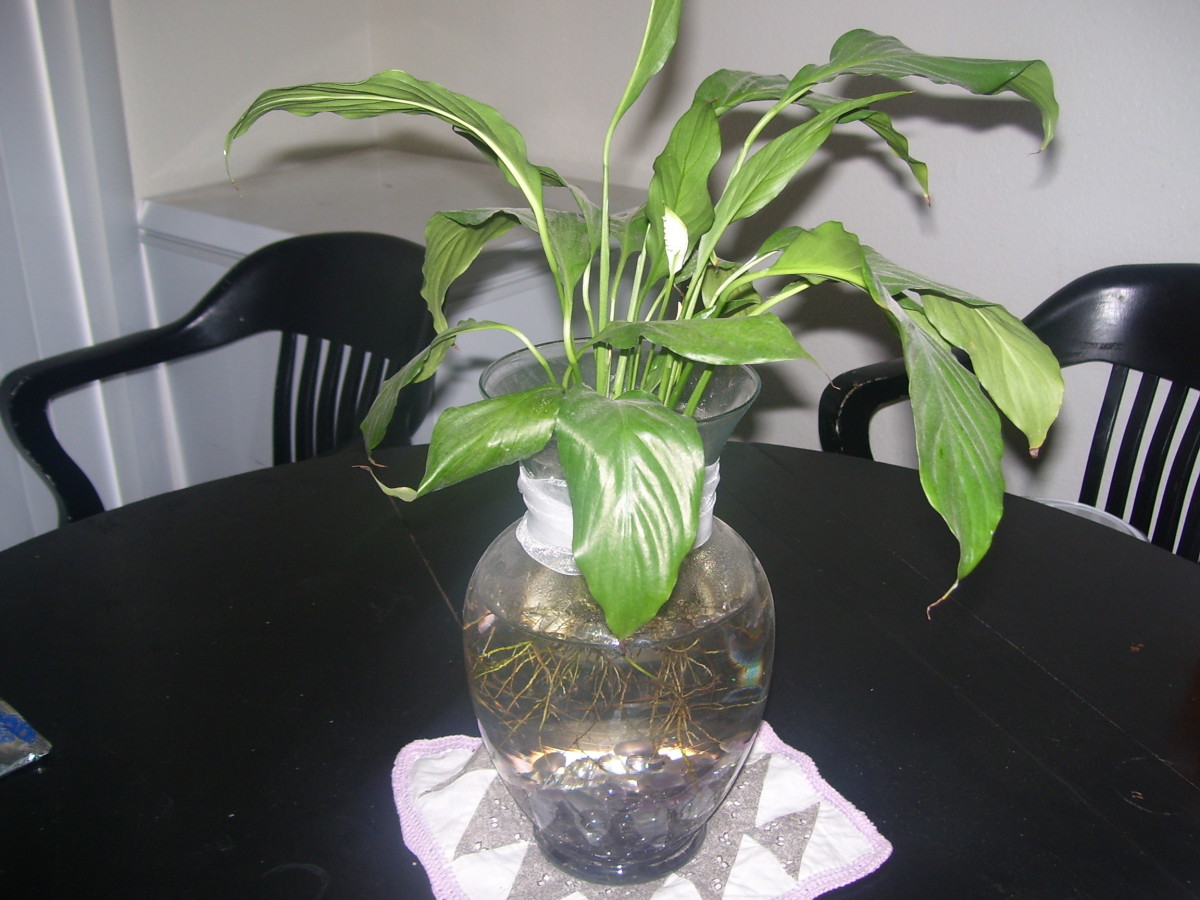- HubPages»
- Pets and Animals»
- Tropical Fish & Aquariums»
- Aquariums & Fishbowls
Green Water in the Aquarium
Green water is most often the result of an algae bloom. It often has turned an aquarium into what appears a thick pea soup. It is extremely unsightly in the novice's aquarium, and is extremely difficult to eradicate, even for the advanced fish keeper.
Green Algae is a single celled plant that uses light to photosynthesize. The plant itself is extremely small, only a single cell, and when conditions are right, will multiply quite rapidly. Green algae reproduces either asexually by buds, or in a second step, it sexually combines with other cells to product new plants with full chromosome content. These in turn grow buds and the process starts all over again. When this replication spirals out of control and overtakes an area, this is called a bloom. The major problem is that the algae plants are so small they are rarely removed by any standard filter, and even those that are trapped tend to clog the materials, slowing the flow and allowing more algae to remain in the actual aquarium water since the intake suction is reduced to continue the bloom.
The right conditions for a bloom include adequate fertilizer and light. In most cases in the home aquarium, even a new tank, the fertilizer needs are easily met. The only limiting factor for plants is phosphate, and most aquariums have more than enough to support a massive bloom if the lighting is adequate.
The most important factor when green water occurs is light. In my experience, in the great majority of the cases where a bloom occurs, natural light is allowed to strike the aquarium. The actual time when sunlight enters the aquarium can be quite brief, ten to twenty minutes a day seems to be enough. A very brightly sunlit room can also have the same effect.
Because of the size of the plant, and the very fast replication, eradicating an algal bloom is extremely difficult.
I do not advocate adding algicides, in many cases they may cause harm to the fish, I prefer a natural solution rather than employing strong toxic compounds.
A number of small water changes, about 10% per time spaced a day apart will dilute the cloud, but still leave it tinted green in most cases. This can be combined with more homeopathic actions.
The most effective way is to remove the light source. If the sun is striking the tank from the rear or side, use a background to cover and block the entry of light. If the room is very bright, draw the shades during a greater part of the day to reduce the amount of light the algae can use. As a last resort, disassemble the aquarium and move it to a place that is much darker and use artificial lighting for the aquarium. Unless the tank is heavily planted with aquarium plants, the amount of artificial light the fish receive is not particularly important.
The above is the best way to control the problem for the long term. Sunlight is extremely powerful, and is no friend to an aquarium. The other area that can be manipulated and controlled by the aquarist is the amount of available phosphate in the aquarium. This chemical compound is considered to be a limiting factor, if there is not enough of it, the plants are not able to grow. Just like reducing the sunlight limits the algae from photosynthesizing so that they starve and die back, limiting the phosphate will also inhibit the growth of algae from a metabolic constraint. At extremely low levels of phosphate, aquarium plants as well may suffer.
Generally a balance exists between algae and live aquarium plants. When standard plants are thriving, they are much better at competing for available phosphate and get what they need first, so algae often is overwhelmed. A rooted aquarium plant is able to extract nutrients from the soil as well, so reduction of dissolved phosphates in the water column is normally not a handicap for standard aquarium plants, rather they are much better able to compete and win against free floating algae.
Introduction of phosphate comes every time the fish are fed, as it is a component of the food. Fish require some phosphate for their metabolic processes, but rarely as much as is provided in the food. Some manufacturers have recognized this and consciously reduced the amount of phosphate in the foods they offer. Careful feeding with low phosphate foods will reduce the amount available for algae to use for themselves.
If there is still too much, the use of a phosphate remover resin will help keep the concentration low and prevent sudden blooms of algae. There are a variety of these products available on the market. Most require that they be added to the higher flows of the filter and will remove a set amount of phosphate when they have been exhausted.
From a purely homeopathic viewpoint, I also use a biological sludge eliminator that helps break down the waste materials, from all sources, food, fecal mater and other decaying organic material. These bacteria teams incorporate phosphate into their biomass, thus preventing it from being available for free floating algae to exploit.
Sometimes the only thing that will do is a rapid fix, there are some flocculants on the market that will help. A flocculent will attract the algae as well as any other suspended particles into larger diameters clumps to allow the filter to remove them through its screens. Use a poly wool or filter floss in the filter rather than the regular filter materials. It is cheaper and, believe me, you will need to discard the material immediately after use. Poly Wool is the best trap for this treatment. Do not overdose. The downside to these products is that the clumping action will reverse and it will be even harder to clear the tank if you do!
Algae is rarely ever totally removed from an operating aquarium, most of the time some variety is anchored to hard surfaces, but the types that produce green water are suspended in the water column. They will gradually reduce to invisible populations when denied natural sunlight or enough phosphate to grow. Live rooted plants under artificial light have a better competitive advantage to grow and prevent algae explosions of any type. It seems the two are antagonistic, and there is very rarely a problem with algae in a strongly growing live planted aquarium.



